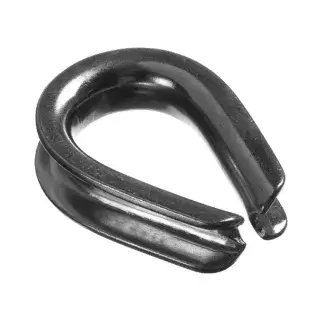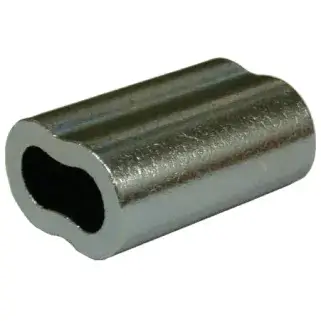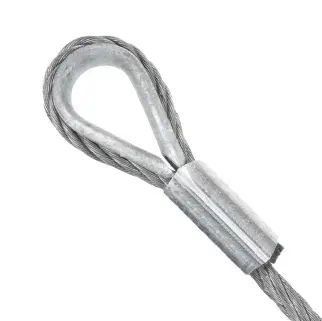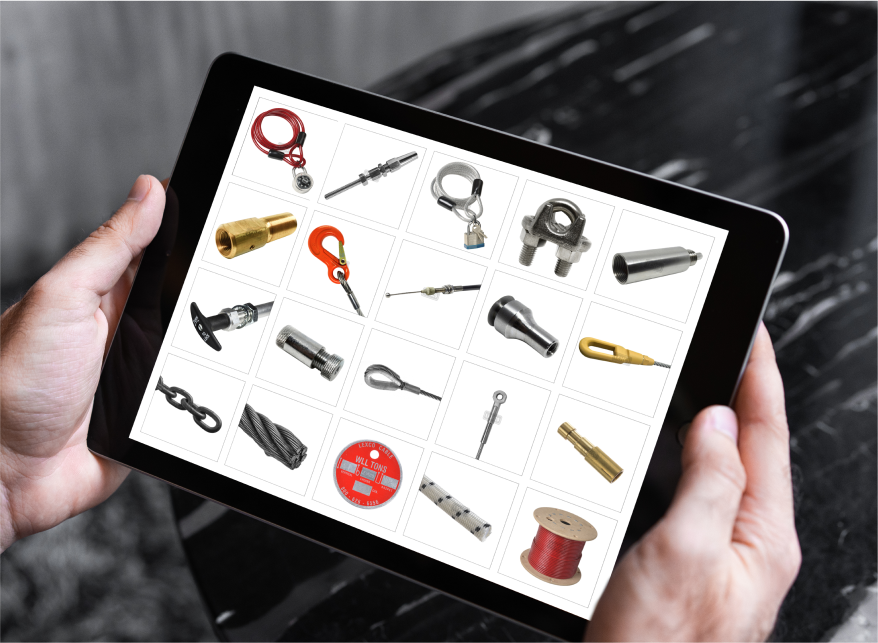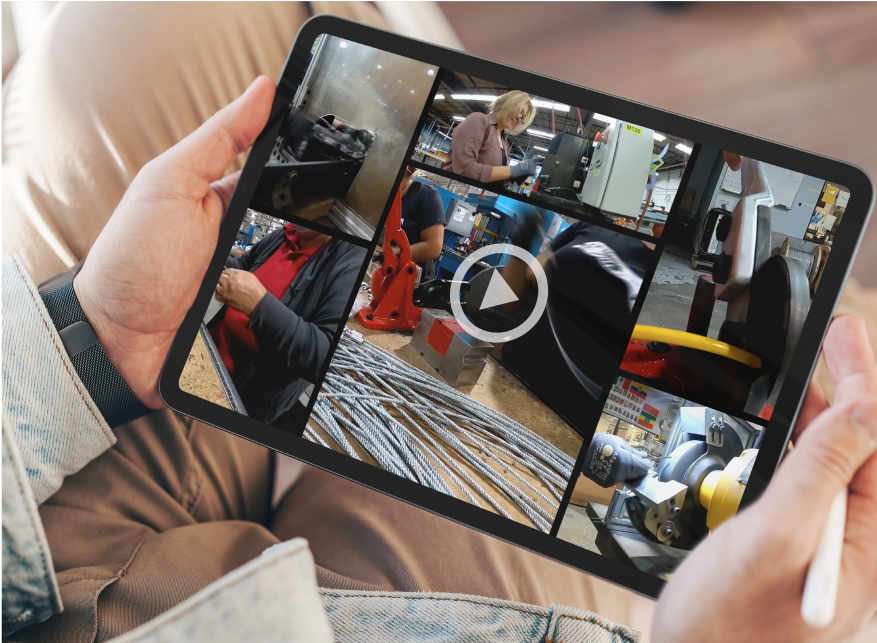How To Assemble a Wire Rope Sling With Mechanical Splice Eye
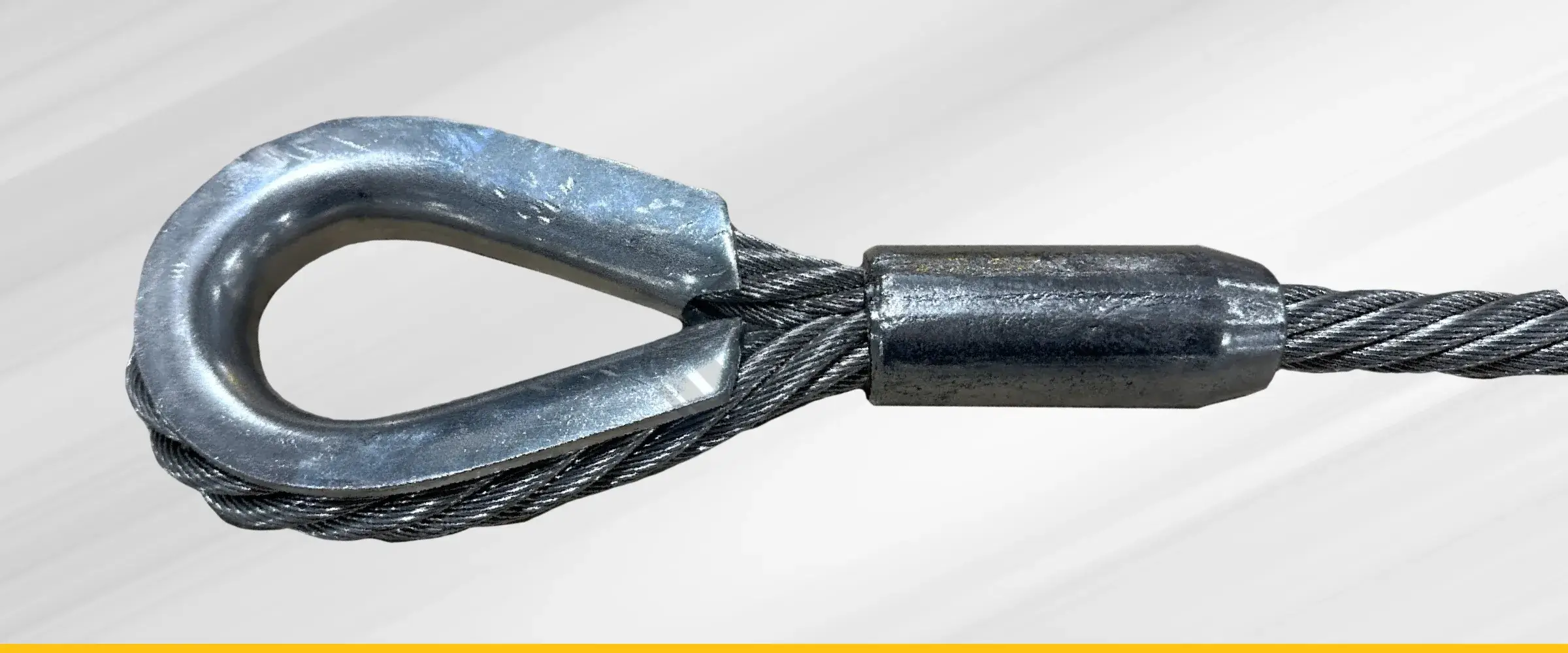
How To Assemble a Wire Rope Sling With Mechanical Splice Eye
Heavy lifting is a routine part of industrial work, requiring equipment that delivers strength, precision, and safety. One essential tool used across countless applications is the wire rope sling. From hoisting large machinery to supporting structures or loading heavy materials, wire rope slings play a vital role in ensuring efficient and secure operations.
Because these slings often carry massive loads, they must be manufactured with extreme care and attention to quality. Any flaw in their construction can lead to equipment failure, costly damage, or even serious injury. At Lexco, we manufacture wire rope slings in-house under strict quality standards and a proven process, ensuring every sling is ready for real-world lifting demands.
How Lexco Builds Your Sling to Perform
The Flemish Eye Splice is fabricated by unlaying the rope body into two parts—three strands in one part and three strands with the core in the other. This allows the loop to form. The strands are rolled back around the rope body, and a metal sleeve is slipped over the splice ends and swaged to secure them.
Following these steps correctly is critical. Lexco’s team, backed by years of hands-on experience, performs detailed inspections and quality control checks on every sling to ensure it meets or exceeds industry safety standards. In lifting applications, even the smallest flaw can have serious consequences.
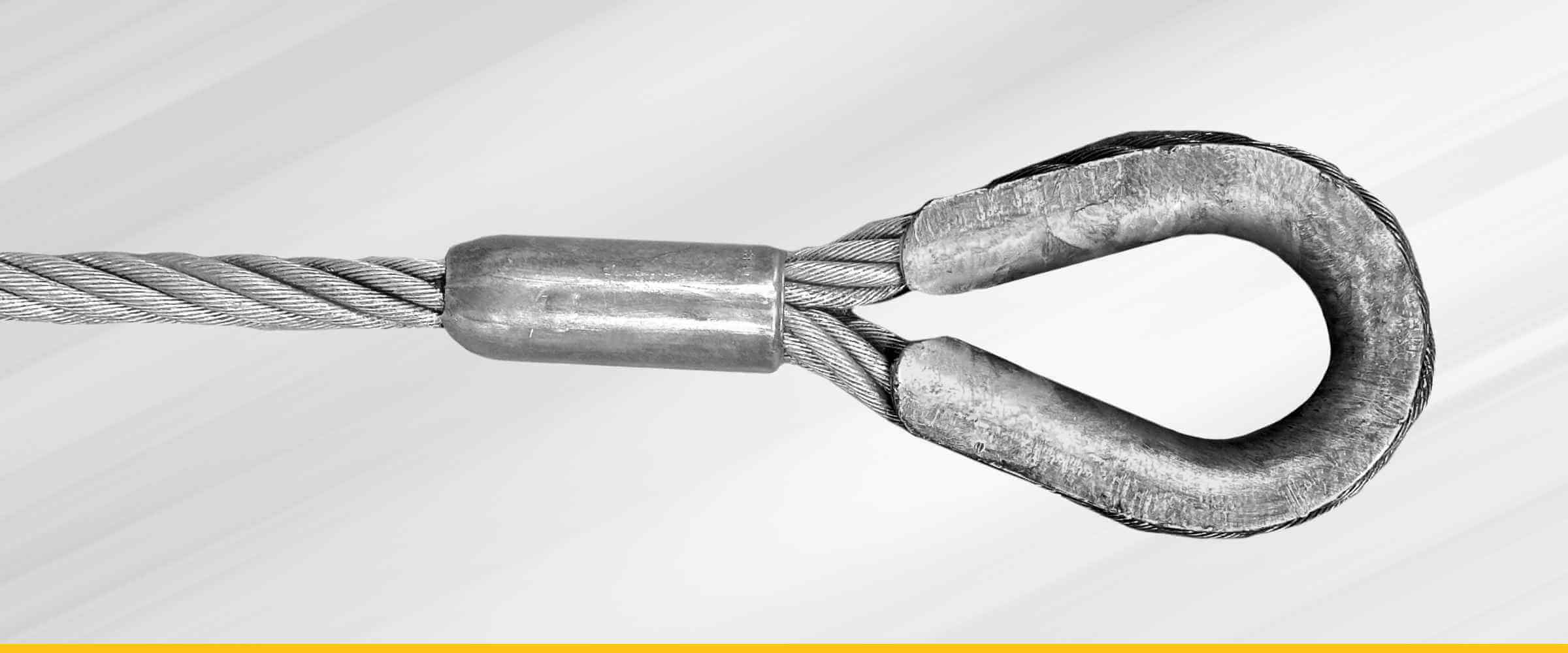
Built-In Safety and Quality
At Lexco, safety and quality are engineered into every step of the fabrication process. One of the first checkpoints is strand alignment: each wire rope must be perfectly aligned before swaging to ensure sling strength and longevity. Our team verifies uniformity and distribution by carefully measuring and double-checking each stage of the process.
Another critical step is swaging (compressing the Flemish Eye sleeve over the splice using Lexco’s hydraulic presses). Proper swaging ensures correct pressure and positioning, securing the splice, distributing the load evenly, and preventing slippage, fatigue, or fraying during use.
Once fabrication is complete, each sling undergoes proof load testing. This verifies both the consistency of our process and the strength of the finished assembly.
Why Quality Matters
Incorrect fabrication (misaligned strands, underswaged sleeves, or untested products) can shorten a sling’s lifespan and endanger users. Lexco eliminates these risks through meticulous craftsmanship, rigorous quality control, and a commitment to safety.
Here is a demonstration of how Lexco creates
a Flemish Eye Splice that meets industry standards:
a Flemish Eye Splice that meets industry standards:
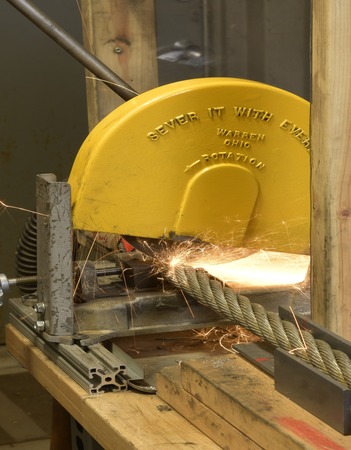
STEP 1
Remove the wire rope from the reel and then cut wire with an abrasive wheel. Mount the cut wire rope length in vise such that the loop can be fabricated on the first side.
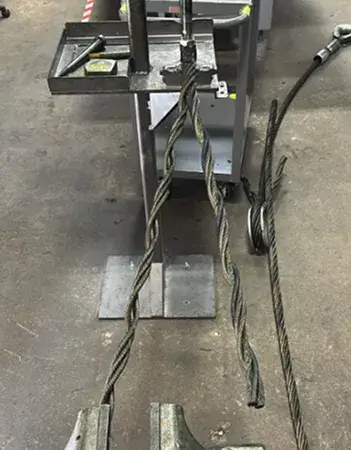
STEP 2
Unlay the strands 7 full lays, not counting the one that has been cut.
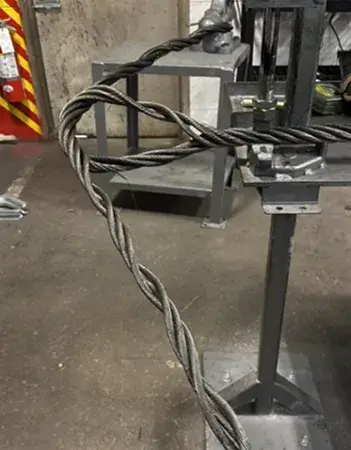
STEP 3
Cross the 3-strands grouping over the grouping with core, then bring the group with core over the 3-strand grouping, and down through the eye formed. Match the strands at the back center of the eye. See that the tail lengths are corrected.
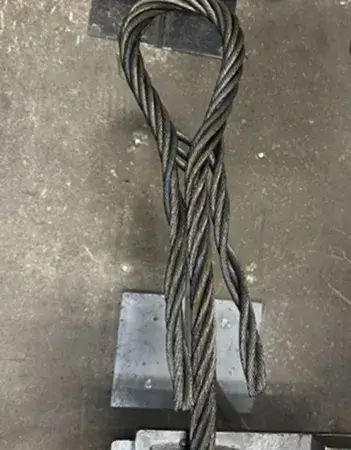
STEP 4
Finish relaying strands and add thimble (if required). Strand ends and core must be laid in the proper position for covering with sleeves. They should be laid along the outside of the neck of the eye. It is important that none of the strand ends are overlapping. The core can be either laid on the outside with the strands or buried.
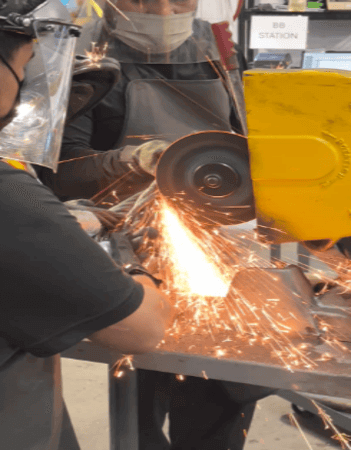
STEP 5
Saw off extra excess wires according to the Flemish
Splice process.
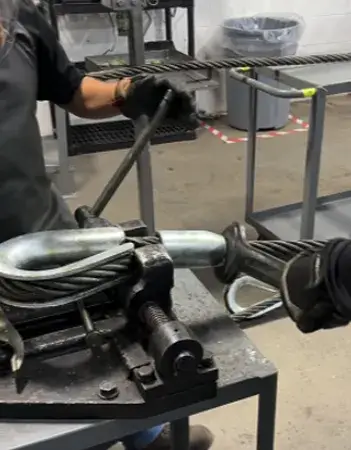
STEP 6
The sleeve must be driven over the spliced strands until the sleeve bottoms out.
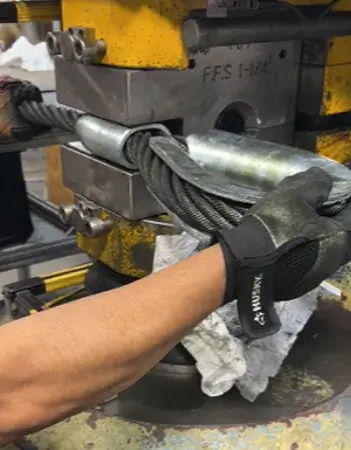
STEP 7
Swage the Flemish Sleeve to achieve manufacturer’s after swage tolerance.
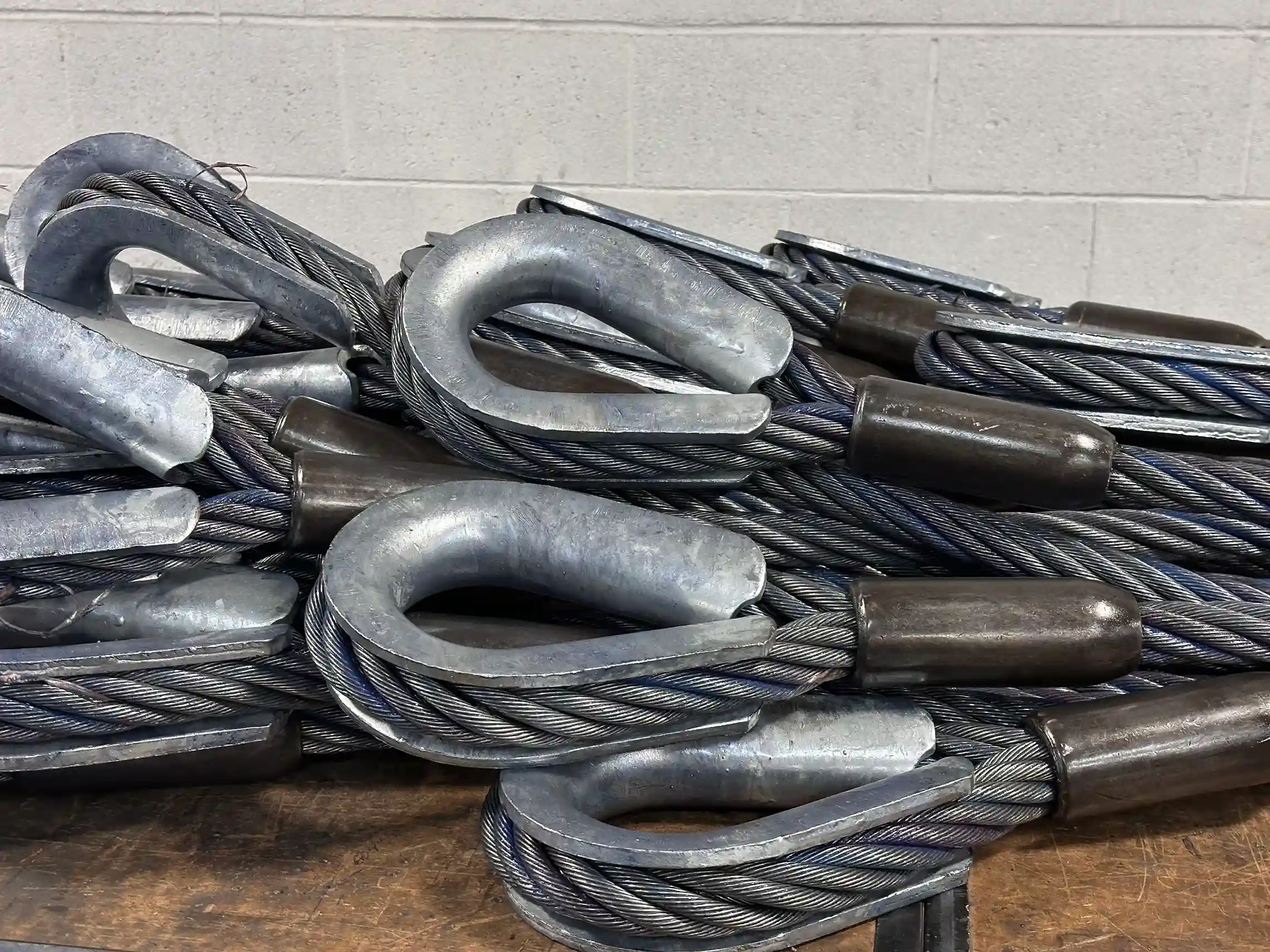
STEP 8
Repeat steps 3-9 for the second end. Proof load and tag.
Wire Rope Sling Types and Capacity Chart
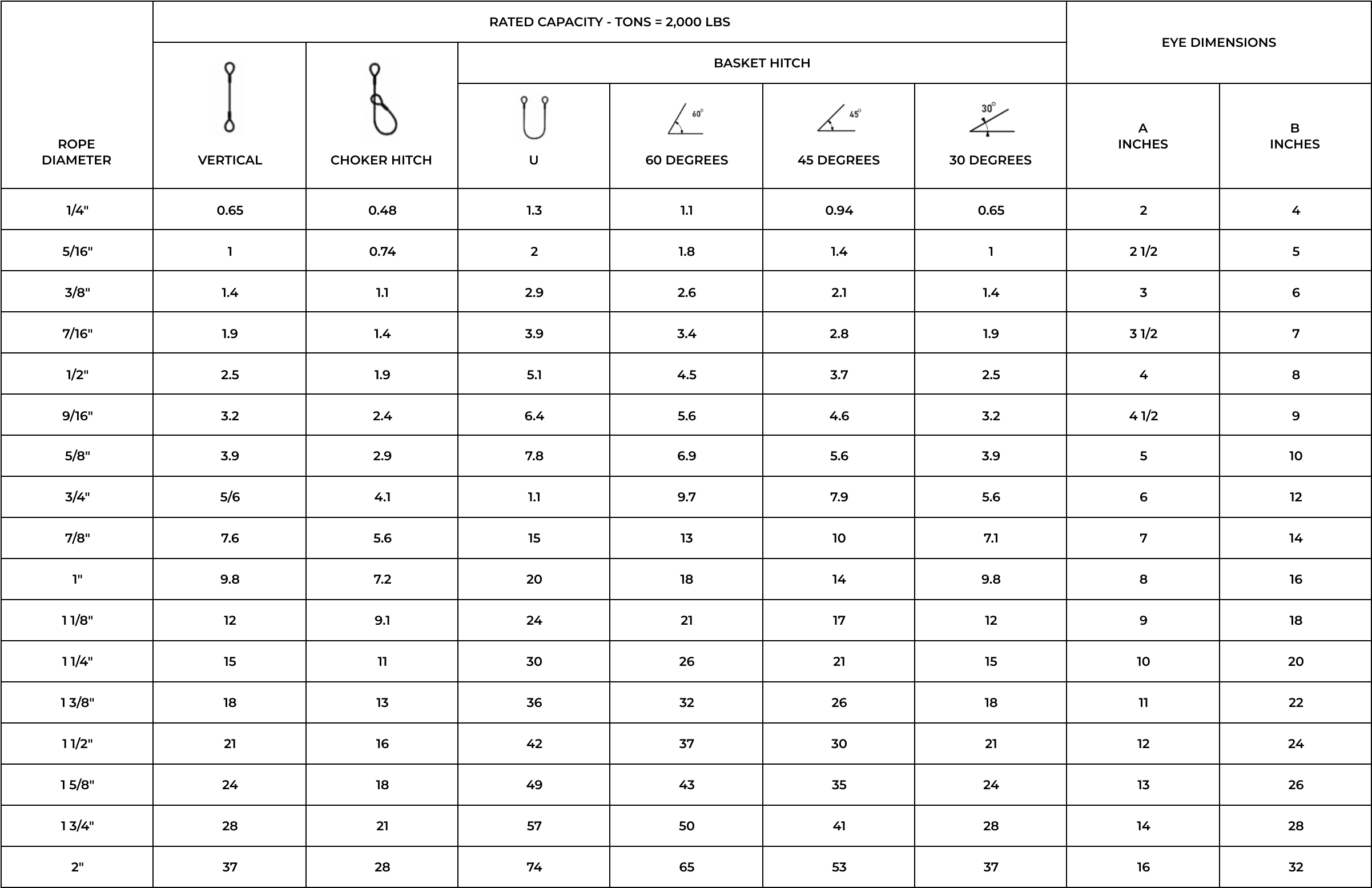
Conclusion
Flemish spliced wire rope slings are widely used for lifting and towing because of their strength and durability. Each sling can be customized for length, hitch type, and hardware, such as hooks, thimbles, or shackles, to fit the application. At Lexco, these assemblies are carefully fabricated and proof tested to meet safety and performance standards.
To ensure continued reliability, slings should be inspected and maintained regularly and used in accordance with industry guidelines.
To view our wire rope sling with mechanical splice eye assembly process, watch our YouTube:
Check out Lexco’s other fabrications by visiting the Lexco Gallery.
To see a complete list of safety warnings for wire rope slings
- Never exceed the working load limit.
- Match components properly.
- Keep out from under a raised load.
- Avoid shock locks.
- Inspect products regularly.
- Destroy, rather than discard items that have been judged defective.
- Ensure that all portions of the human body are kept away from the areas between the sling and the load and between the sling and the crane or hoist hook.
- Ensure that personnel never stand in line with or next to the legs of a sling that is under tension.
- Ensure that personnel do not stand or pass under a suspended load.
- Ensure that personnel do not ride the sling, or the load, unless the load is specifically designed and tested for carrying personnel.
- Do not inspect a sling by passing bare hands over the wire rope body. Broken Wire, if present, may puncture the hands.
- Store slings in an area where they will not be subjected to mechanical damage, corrosive action, moisture, extreme temperatures, or to kinking.
- Ensure that slings are hitched in a manner providing control of the load.
- Ensure that sharp edges in contact with slings are padded with material of sufficient strength to protect the sling.
- Ensure that slings are shortened or adjusted only by methods approved by the sling manufacturer or a qualified person. Do not shorten or lengthen the sling by knotting or twisting.
- Ensure that during lifting with or without a load, personally are alert for possible snagging.
- Ensure that, in a basket hitch, the load is balanced to prevent slippage.
- When using a basket hitch, ensure that the legs of the sling contain or support the load from the sides above the center of gravity, so that the load remains under control.
- Ensure that in a choker hitch the choke point is only in the sling body never on a fitting.
- Ensure that in a choker hitch an angle of choke less than 120 degrees is not used without reducing the rated load.
- Ensure the slides are not constricted, bunched, or pinched by the load, hook, or any fitting.
- Ensure that the load applied to the hook is centered in the base (bowl) of the hook to prevent point loading on the hook, unless the hook is designed for point loading.
- Ensure that an object in the eye of a sling is not wider than one half of the length of the eye.
- Do not rest loads on the sling.
- Do not pull a sling from under a load when the load is resting on the sling, or drag slings on the floor or over abrasive surfaces.
Do not allow shock loading.

